Our Bizarre Relatives: A Sea Squirt Family Album

Strength in Numbers
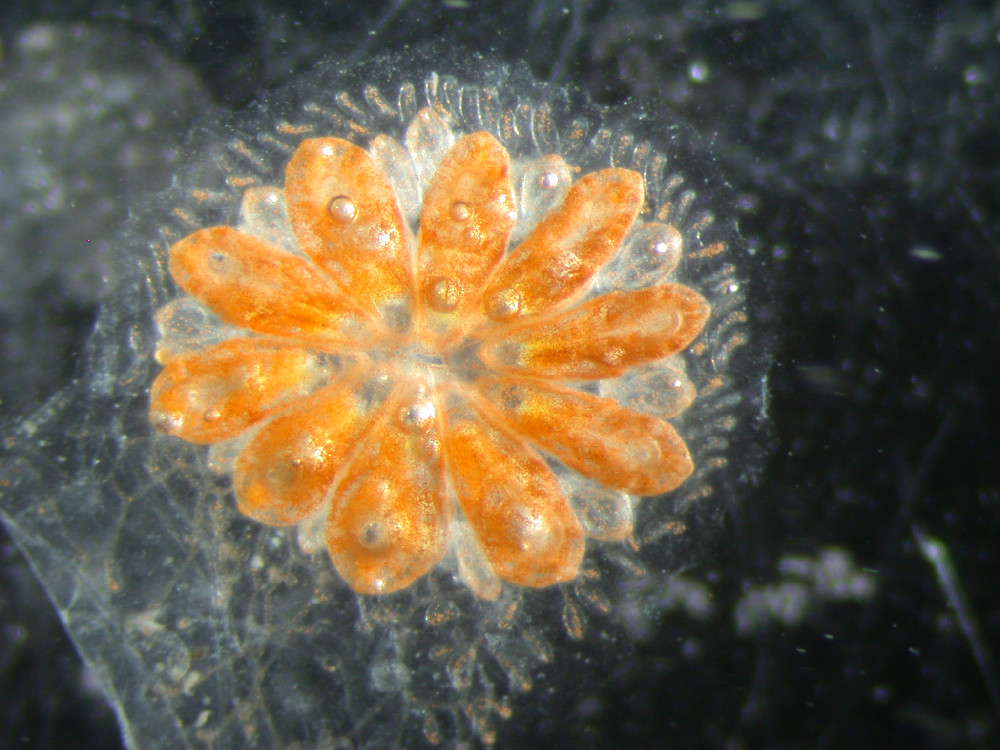
Sea squirts take many forms, small ones, like those shown above, cluster together, ultimately forming colonies, while others live on their own. Although considered invertebrates, sea squirts are surprisingly like us: Recent research has even shown that their tiny hearts use a pacemaker mechanism similar to ours. Some sea squirts are also invasive pests, coating the sea floor and other surfaces, and threatening fish and shellfish.
Come Together
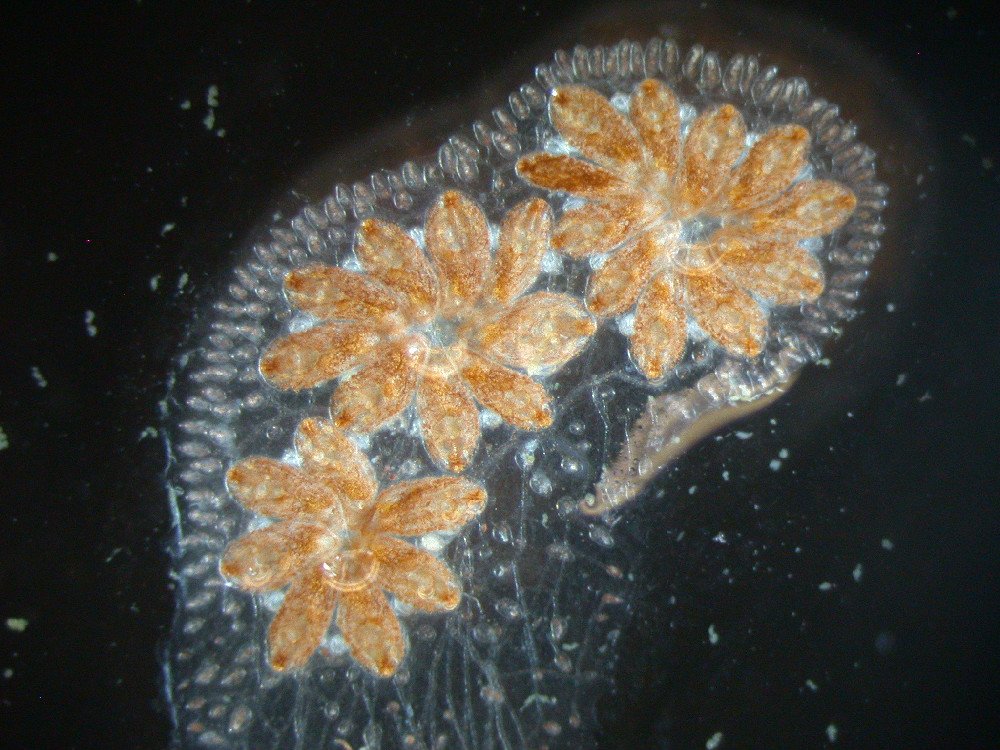
Each petal in these clusters is an individual sea squirt. These adult sea squirts cluster together to form systems, the flower-like structures shown above. The systems then join to build colonies.
Sea Vases
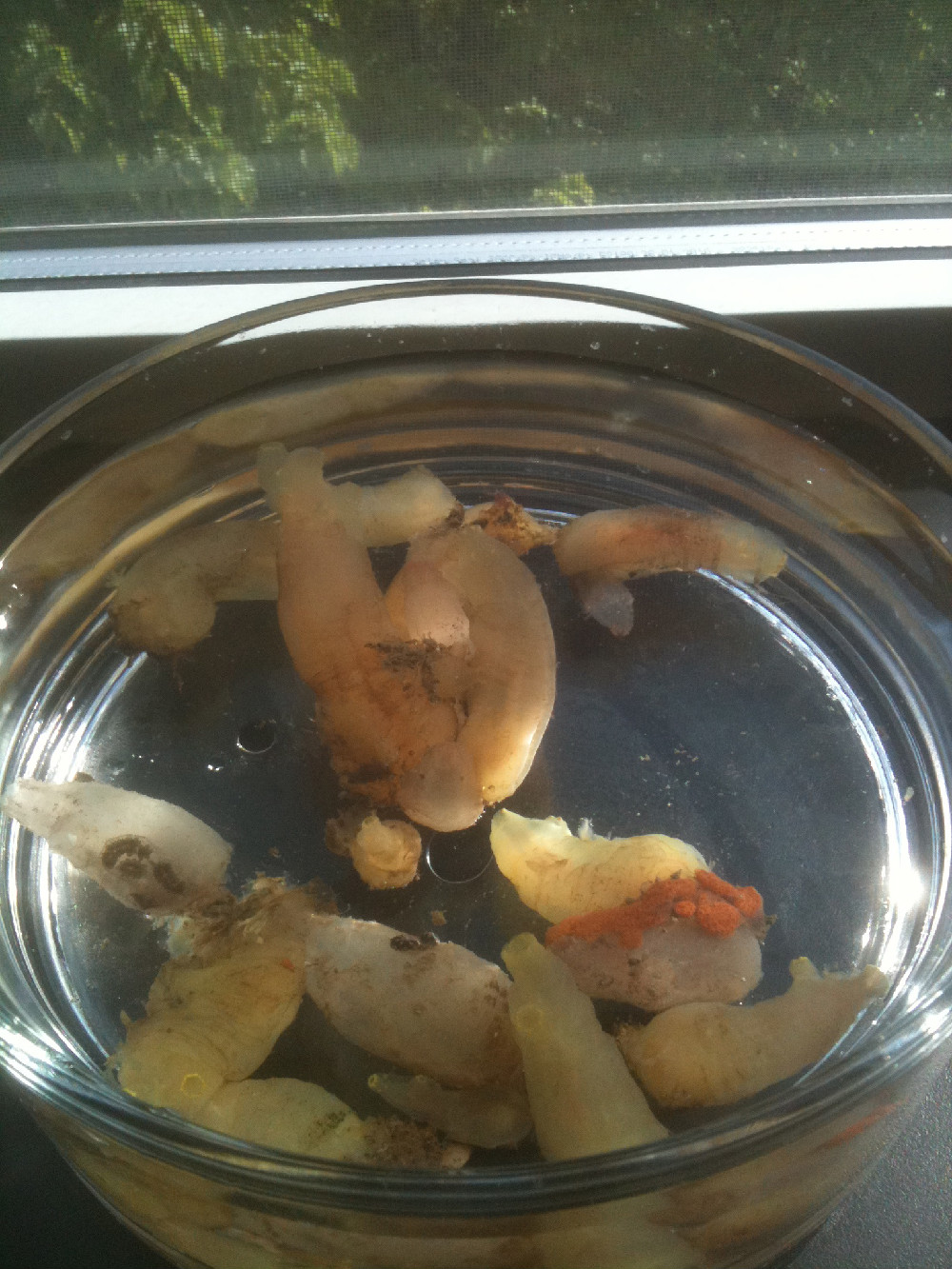
These sea squirts, Ciona intestinalis live independently, not in colonies, and are called sea vases because of their shape. They were collected in Woods Hole, Mass.
At The Begining
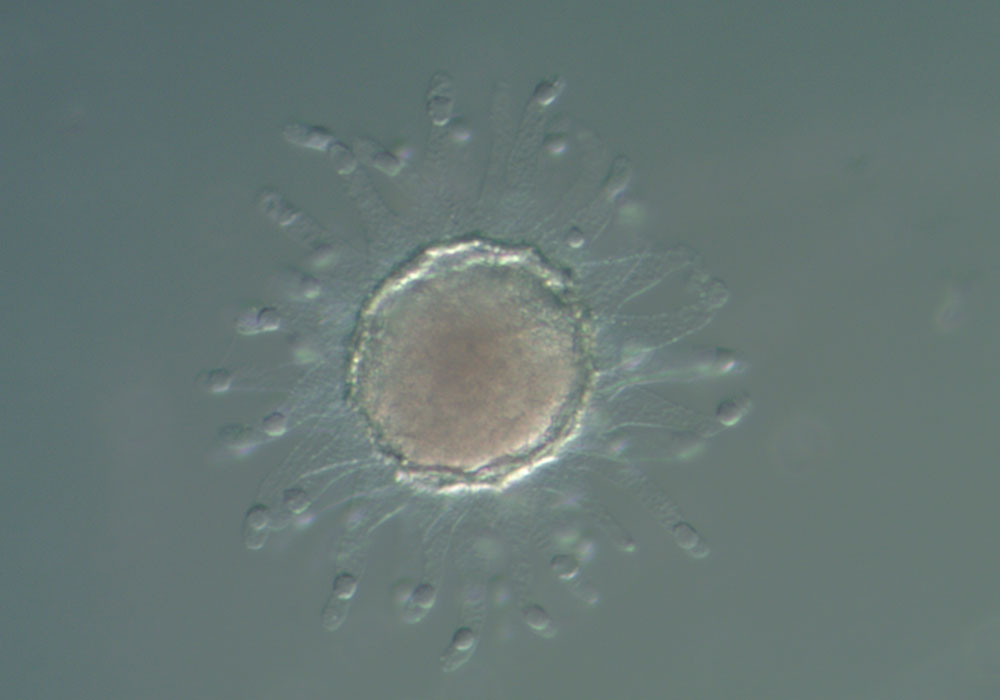
A Ciona intestinalis embryo.
A Growing Sea Squirt
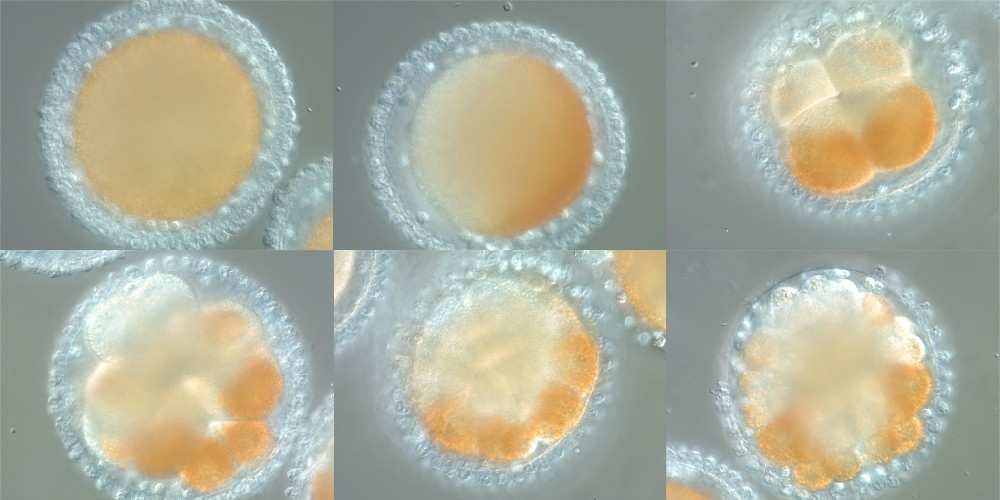
This montage shows the cell divisions of a sea squirt embryo, a species called Boltenia villosa or spiny-headed tunicate. Any cell that inherits the orange pigment, generally on the lower right side of the embryo, becomes muscle.
Our Invertebrate Relative
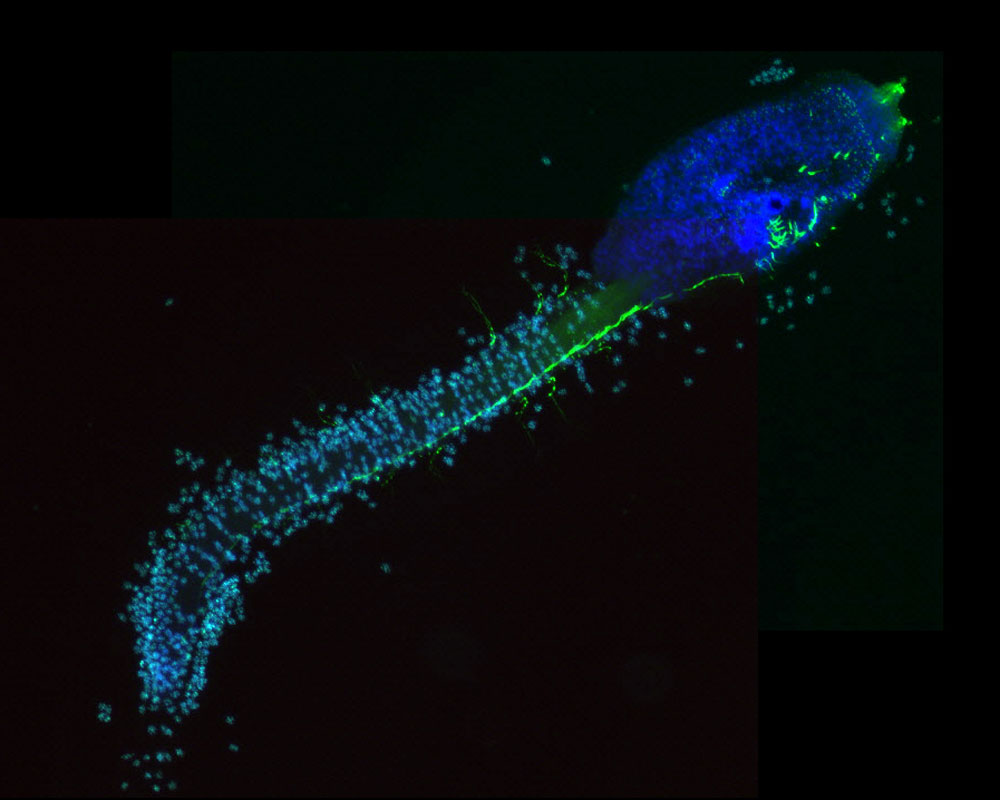
A fluorescent microscope image of a larval sea squirt of the species Ciona intestinalis. Sea squirt larvae resemble tadpoles and have primitive backbones, called notochords, revealing their surprisingly close relationship to us.
Sea Squirt Tadpole
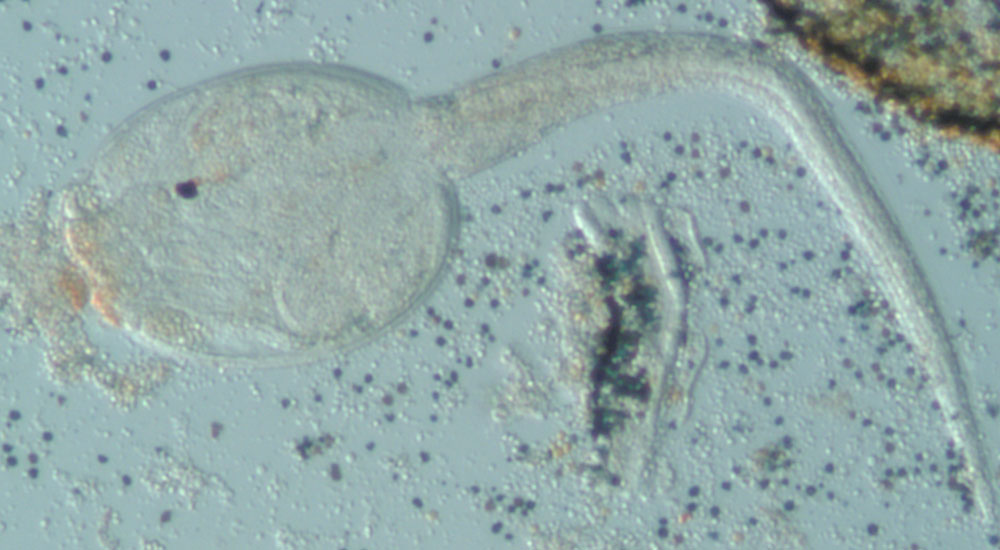
Another tadpole, this one from the colonial species Botryllus schlosseri shown under regular light.
Sign up for the Live Science daily newsletter now
Get the world’s most fascinating discoveries delivered straight to your inbox.
Nerves of Sea Squirt
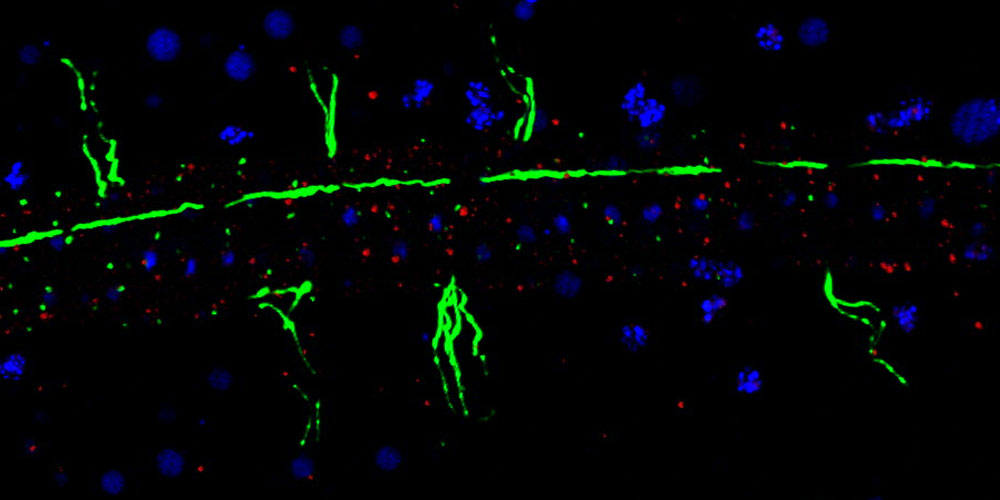
The green lines in this microscope image depict the nerves within the tail of a Ciona intestinalis sea squirt larva.
Colonial Pump
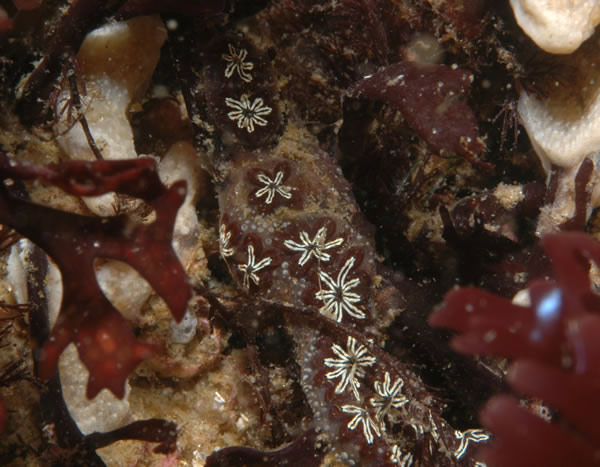
The star sea squirt, Botryllus schlosseri, was introduced from Europe. The organism is colonial, with each individual, called a zooid, pumping water through its siphon, filtering out oxygen and then feeding on the small organisms suspended in the water. A colony consists of many star-shaped clusters.
A Tube Heart
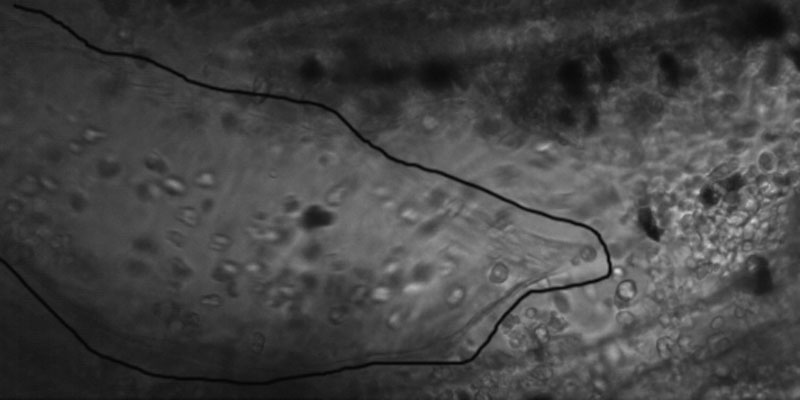
Each sea squirt, whether an individual or member of a colony, has a heart. The heart of an animal within a colony of Botryllus schlosseri is outlined above. Recent research indicates that this sea squirt uses a mechanism similar to our own to keep their heart beat going.
Transparent Chain
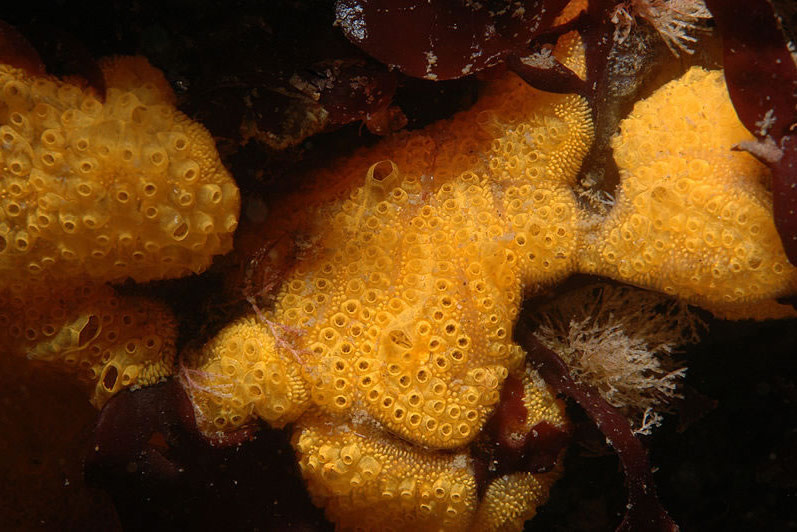
The colonial chain tunicate, Botrylloides violaceus, originated in Japan, China and southern Siberia, and then was introduced to Pacific Northwest waters. The colony of individuals is arranged such that it appears as a clear, fleshy matrix, with systems of dozens of individuals seen on the surface as elongated ovals or chains.











